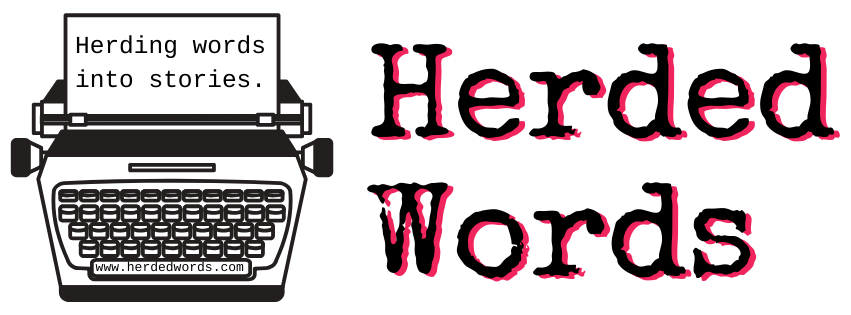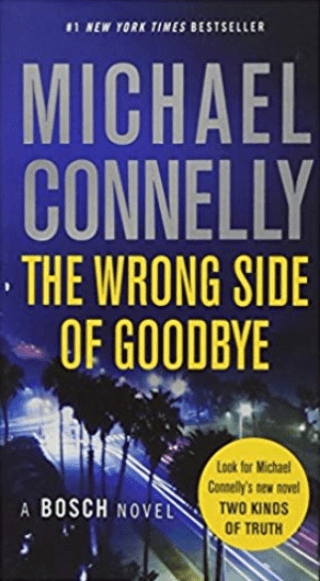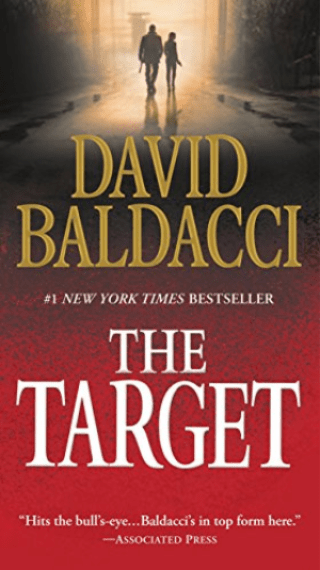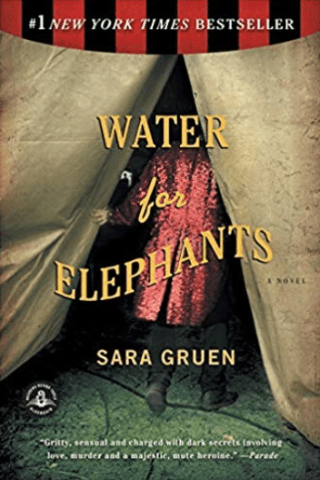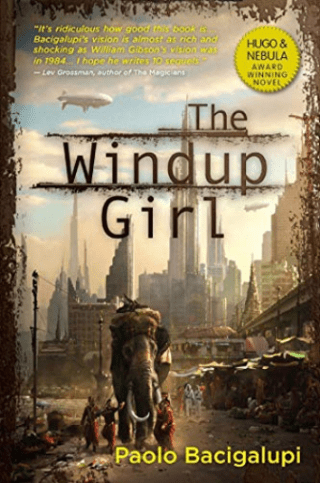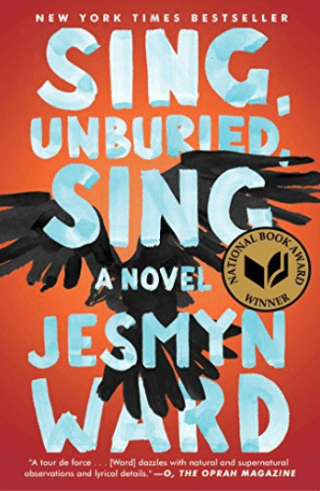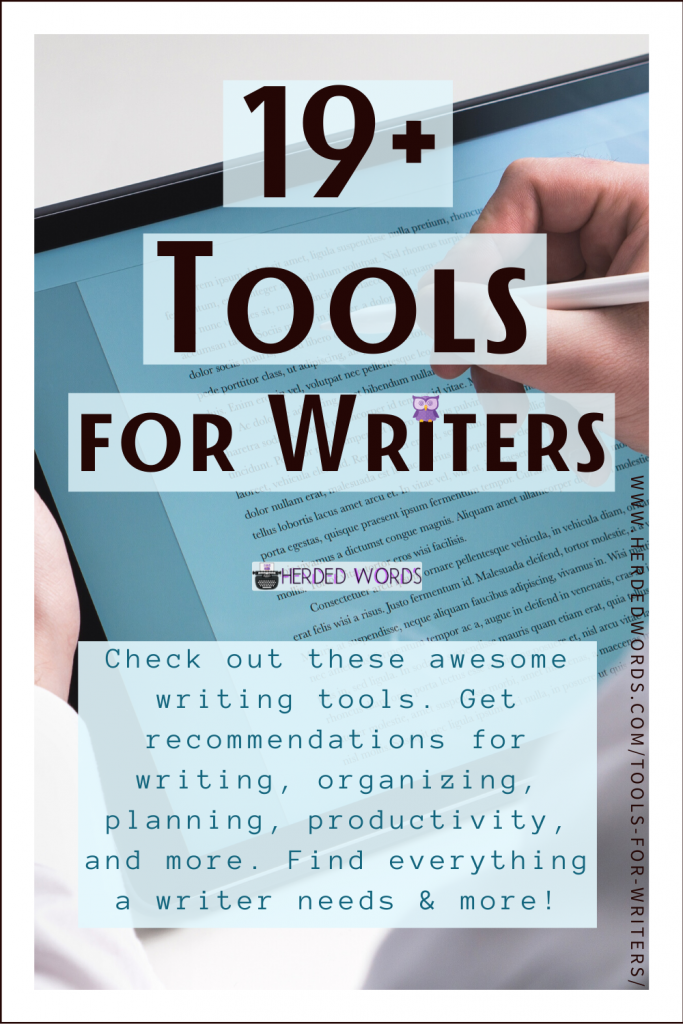
Listen to this post
Herdedwords.com uses affiliate links. This means we receive a commission on the sale of certain items. This is at NO additional cost to you. Visit the policies page to learn more.
How to write the first chapter of your novel can be a daunting task. But it’s an important one. It might be the most important chapter you write.
The first chapter will usually include the 5 elements below – plus it will start with a hook. The hook and the first chapter go together like two peas in a pod.
Once upon a time, people bought books in person. You went to a store, read the back cover and either bought it or not.
For some people, that’s still how they buy their books. But for others, Amazon (and other online retailers) are where they go.
How Book Samples Affect Sales
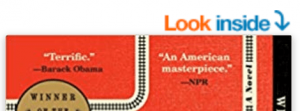
If you go to Amazon and search for a book, you’re not just given the book blurb. You’re also often given the ability to preview the book itself.
You can click ‘Look inside’ above a book cover and a sample of the book will pop up. Samples are usually the first chapter or so.
On the Kindle version, you can send the sample straight to your Kindle or another device to read later.
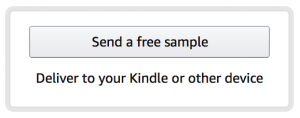
I have a kindle and I always use this feature for books by authors I haven’t read before. If you can’t hook me in chapter 1, why should I keep reading? The number of people doing this isn’t going to decrease.
This is why it’s more important than ever for your first chapter to be great. Not good, not okay, great. It needs to hook the reader so they buy the book to keep reading. It’s time to learn how to write the first chapter using five essential elements.
Table of Contents
How to Write the First Chapter with Five Essential Elements
These are the five elements that most first chapters contain.
#1 – An Interesting (to the reader) Main Character
The first element of how to write the first chapter is an interesting main character.
Your main character needs to be interesting to the reader. To be clear, they don’t have to be interesting on their own, but something about them has to whet the readers’ appetite. The reader has to want to know more – they have to be interested.
The main character doesn’t have to be likable, funny, heroic or amazing. But something about them has to be interesting.
You don’t have to provide a lot of details about the main character in chapter one. But, what the reader learns in chapter one should make them want to read chapter two. Again, the reader should be interested.
Remember, your main character is the one the reader is going to spend hundreds of pages with. Make sure the reader won’t be bored – keep them interested.
Have I said that enough? One more time.
Your reader has to be interested in reading more about your main character.
#2 – Conflict (or the Promise of it)
The second element of how to write the first chapter is conflict.
What is conflict? It’s a clash of interests. It’s also the driving force of all fiction. Conflict is what keeps novels moving forward.
Your interesting main character also needs to be involved in a conflict. The conflict doesn’t have to happen in the first chapter. If it doesn’t, it needs to be hinted at. A reader needs to know there’s going to be conflict.
You can be subtle, as long as the reader understands that something is going to happen. The character is going to clash with something/someone in the future.
An interesting character that experiences conflict will keep the reader turning pages.
#3 – Mystery Over Action
The third element of how to write the first chapter is mystery.
It’s often recommended that the first chapter be full of action.
I disagree. If it fits with the story, an action-packed first chapter isn’t a bad thing. But, it’s hard to make readers care about action when they don’t have any connection to the characters or story.
Furthermore, does an opening action scene drive the reader to keep reading? Sometimes, but will they be interested in the story without the action?
It’s easier (and safer) to start a novel with some mystery. Mystery provides questions for the reader that they want to keep reading to answer. Unlike action, mystery doesn’t need any previous connection to the characters or story. Mystery can drive the development of both.
#4 – Limited Backstory
The fourth element of how to write the first chapter is to limit the amount of backstory you present.
Backstory is boring. Tell us only what is 100% necessary we know – and keep most of it out of the first chapter.
Backstory is the background information – information from before your story starts. As much as possible, keep it out of the first chapter.
Writers often think they need to share backstory to show who a character is. But this is a mistake.
Your characters’ actions, thoughts, words, etc., should show who they are. Use what’s happening in chapter one – not what happened before the story started.
#5 – Less is More
The fifth element of how to write the first chapter is to keep it pared down and focused.
The first chapter is just that, one chapter. A single part of your novel. Find the main character and focus on what will keep your reader reading.
A reader is never going to be able to connect with 154 different major characters in a single chapter. They can’t become invested in the main plot and 267 subplots.
You have a few pages to make your reader want to read hundreds of pages. Make those pages tight and focused.
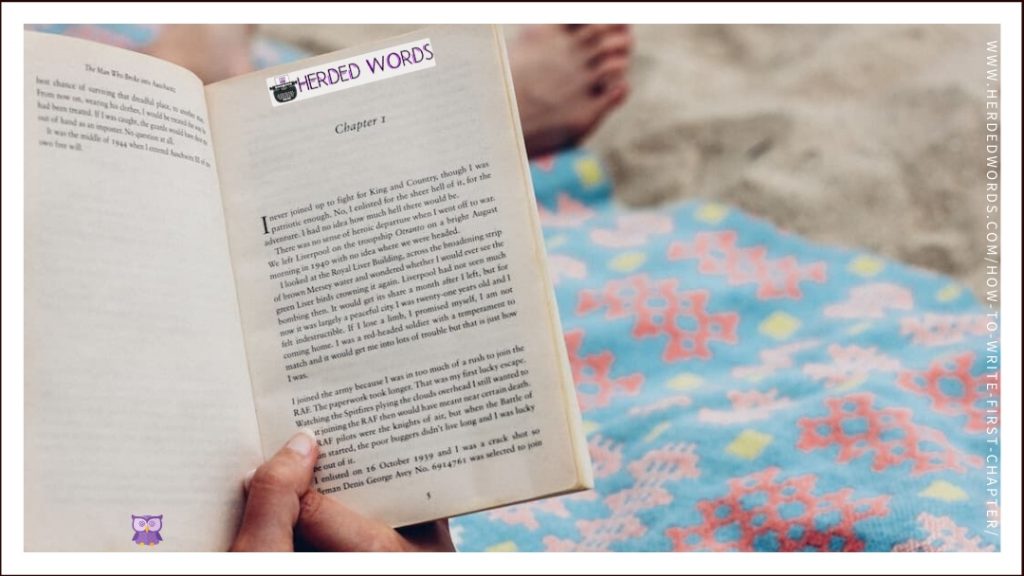
Developing Plot & Structure
Planning out a novel can be difficult. If you want some additional help, check out one of these great workbooks.
How to Write the First Chapter: Examples of Bestsellers
Now it’s time to analyze the first chapters of a couple of modern bestselling novels.
THE WRONG SIDE OF GOODBYE
THE WRONG SIDE OF GOODBYE, published in 2016, is a mystery, thriller, & suspense novel by Michael Connelly. It’s book 19 in the Harry Bosch series.
THE WRONG SIDE OF GOODBYE spent 2 weeks at #1 on the NYT Bestseller List. Between 2009 and 2018, Michael Connelly spent a total of 12 weeks at #1 on the NYT Bestseller list.
Let’s take a look at how the 5 essential elements were used to write the first chapter of THE WRONG SIDE OF GOODBYE (not including the prologue).
#1 – An Interesting Main Character [Harry Bosch]
The very first sentence introduces the main character – Harry Bosch.
Bosch is gruff, impatient and there’s clearly a long history with Creighton.
Most readers of THE WRONG SIDE OF GOODBYE will be familiar with the series and already invested (and interested) in Bosch.
Bosch didn’t mind the wait.
#2 – Conflict [Bosch vs Creighton]
The conflict starts early. Bosch clearly dislikes Creighton and doesn’t want to work for his company.
We’re given some backstory about time they both spent working for the LAPD.
This is a minor conflict, but it keeps the first chapter moving briskly.
“I told your assistant I wasn’t interested in a job with Trident,” Bosch said. “She said it wasn’t about that. So why don’t you tell me what it is about so we can both get on with our days.”
#3 – Mystery over Action [Bosch Only]
The first chapter brings a lot of questions to the reader’s mind. But the big mystery is about why a man will speak only to Bosch.
“He wants to speak to you,” Creighton finished.
“About what?” Bosch asked.
“I don’t know. He said it was a private matter and he specifically asked for you by name. He said he would discuss the matter only with you. He had this certified check drawn for ten thousand dollars. It is yours to keep for meeting him, whether or not the appointment leads to further work.”
#4 – Limited Backstory
Almost the entire chapter is an interaction between Bosch and Creighton. There are a couple of pieces of backstory added but it’s quite minimal.
A reader new to the series would learn enough to understand the story. A returning reader to the series wouldn’t be bored by repetition.
#5 – Less is More
The chapter takes place in 2 rooms, mostly in Creighton’s office.
There are 3 characters involved, plus of a few others are mentioned.
The chapter keeps a tight focus on the upcoming mystery – why Bosch?
THE TARGET
THE TARGET, published in 2014, is a mystery, thriller & suspense novel by David Baldacci. It’d book 3 in the Will Robie series.
THE TARGET spent 2 weeks at #1 on the NYT Bestseller List. Between 2009 and 2018, David Baldacci spent a total of 11 weeks at #1 on the NYT Bestseller list.
Let’s take a look at how the 5 essential elements were used to write the first chapter of THE TARGET.
#1 – An Interesting Main Character [Earl]
Is Earl the main character? No, but he’s the only named character in the first chapter.
The “rules” have been broken – but the interest remains. Earl isn’t the main character, but he’s an interesting character. He isn’t boring. He’s unique and nuanced.
“I’m getting away,” he bellowed. “Better send the coon dogs come get me.” Then he went into another coughing spell that lasted until a nurse came over and gave him some water, a pill, and a hard slap on the back. Then he helped Earl sit up straighter.
#2 – Conflict [Earl the Killer]
Earl clearly states that he has someone left to kill. The reader can safely assume that this will lead to future conflict.
More precisely, he has one more person to kill. What do you want to guess that person will be the main character (or loved by the main character)?
#3 – Mystery over Action [Who?]
Who does Earl have to kill? Who are the two men who show up? Why are they releasing him? How many people did he kill? Why?
There are so many questions left unanswered. Mystery is well-used in this chapter.
He waved over the two men in suits.
#4 – Limited Backstory
Some backstory is provided, mostly through conversation with the nurse. But it’s very limited.
We don’t know the main character, yet. So, it’s not surprising that there are a lot of questions about the past left unanswered.
#5 – Less is More
This chapter is tight and focused
It takes place in one location. The focus is Earl with minimal other characters involved. There is only one plotline to follow.
WATER FOR ELEPHANTS
WATER FOR ELEPHANTS, published in 2010, is a contemporary novel by Sara Gruen. The movie was released in 2011.
WATER FOR ELEPHANTS spent 8 weeks at #1 on the NYT Bestseller List. It has sold over 10 million copies worldwide.
WATER FOR ELEPHANTS provides an interesting conundrum – does a prologue count as the first chapter? It’s the first thing that will be read, but the first chapter is called ONE.
I’m going to say no (because I’m biased and don’t like prologues).
Let’s take a look at how the 5 essential elements were used to write the first chapter of WATER FOR ELEPHANTS (not including the prologue).
#1 – An Interesting Main Character [Jacob]
Jacob Janowski is an old man living in a retirement home. He’s ninety or ninety-three years old, he’s lost track. He’s a veterinarian and hints at spending time working for the circus but he’s very secretive about it.
Sometimes I think that if I had to choose between an ear of corn or making love to a woman, I’d choose the corn.
#2 – Conflict [Jacob & McGuinty]
There’s a mild conflict between Jacob and another resident of his retirement home, McGuinty. McGuinty claims to have carried water for elephants in a circus and Jacob gets angry.
“Listen pal,” I say. “For decades I’ve heard old coots like you talk about carrying water for elephants and I’m telling you now, it never happened.”
#3 – Mystery over Action [the Circus]
Something clearly happened to Jacob involving the circus. Although he’s angry with McGuinty, he doesn’t want to talk about the circus. Nobody knows that he worked for one.
I hesitate and then change my mind. “Never mind,” I say.
#4 – Limited Backstory
The first chapter is written in the present tense. It’s happening now. There’s limited backstory presented and what’s given is vague.
However, the reader has some idea of what’s to come because of the prologue.
#5 – Less is More
WATER FOR ELEPHANTS fails on this point.
Large parts of the chapter feel rambling and unrelated.
There are lengthy descriptions that are unnecessary. For example the first 285 words are an explanation of why Jacob doesn’t know his exact age. This is definitely not LESS information.
When you’re five, you know your age down to the month. Even in your twenties you know how old you are. I’m twenty-three, you say, or maybe twenty-seven. But then in your thirties something strange starts to happen. It’s a mere hiccup at first, an instant of hesitation.
Notes on the Prologue
The first chapter of WATER FOR ELEPHANTS isn’t epic. In fact, without the prologue, a lot of readers wouldn’t continue reading.
It’s quite common for prologues to be used when a first chapter can’t drive reader interest. I’d prefer a strong first chapter and that’s what I think you should be writing.
How to Write the First Chapter: Examples of Award-Winners
How do award-winning novels compare? Let’s examine the first chapters of some.
THE WINDUP GIRL
THE WINDUP GIRL, published in 2009, is a science fiction novel by Paolo Bacigalupi.
THE WINDUP GIRL won the 2010 Hugo Award.
Let’s take a look at how the 5 essential elements were used to write the first chapter of THE WINDUP GIRL.
#1 – An Interesting Main Character [Anderson Lake]
Anderson Lake is presented as the main character in the chapter. He’s a complicated man and it’s hard to get a read on him from this chapter.
Is he good or bad? How far will he go for his job? Is he bitter or callous?
Anderson shrugged. “It’s a useful cover.”
#2 – Conflict [A Post-Catastrophe World]
There’s no significant conflict presented in the first chapter, but there’s a lot of conflict potential suggested.
The novel is set post-catastrophe where food and energy are scarce (and disease-ridden). The implied conflicts are likely going to involve Lake, the energy companies and Thailand.
“You should have informed us when you first saw the nightshades in the markets. The Thais have been successfully growing potatoes for at least five seasons. They’re obviously sitting on top of a seedbank, and yet we heard nothing from you.”
#3 – Mystery over Action [New Fruit]
The chapter opens with a mystery – both for Anderson Lake and for the reader. A mysterious new fruit. Lake wonders how it came to be and the readers wonder, well, everything.
He hands over a hemp sack without bothering to bargain. Whatever she asks, it will be too little. Miracles are worth the world.
The middle section of the chapter gets bogged down in a lot of tedious (and unnecessary) details.
But the feeling of mystery remains – what happened? Why? Why is Thailand doing so much better? Why is Lake there?
The last part of the chapter switches to a more action sequence.
The megodont’s exultant trumpeting echoes as Anderson sails through the air. The factory floor rushes up. He slams into concrete. Blackness swallows him.
#4 – Limited Backstory
The opening part of the chapter hints at food scarcity, disease, and extinction. It also suggests that a lot of countries are in turmoil.
There is a flashback segment in the first chapter. It’s pretty short but delivers a huge amount of information.
The rest of the chapter is mostly based on what’s presently occurring – with some backstory added in sentences here and there.
Yates laughed. “Don’t talk to me about saving lives. I saw what happened with the seedbank in Finland.”
#5 – Less is More
The chapter starts to lose steam after the flashback. It goes into excruciating detail about manufacturing at the factory.
The chapter would have benefited from being cut down in length (and/or split into two chapters).
However, the number of characters is kept rather low. One major character is introduced at a time, with some information about them.
The main flywheels spin up and the factory shivers as gears beneath the floor engage. The floorboards vibrate. Kinetic power sparks through the system like adrenaline, a tingling anticipation of the energy about to pour into the manufacturing line.
SING, UNBURIED, SING
SING, UNBURIED, SING, published in 2017, is a fiction novel by Jesmyn Ward.
SING, UNBURIED, SING won the 2017 National Book Award for Fiction.
Let’s take a look at how the 5 essential elements were used to write the first chapter of SING, UNBURIED, SING.
#1 – An Interesting Main Character [Jojo]
Jojo is the main character presented in the first chapter. The chapter is told from the first-person point of view from Jojo’s perspective.
The opening chapter occurs on Jojo’s birthday. He’s a child with a difficult life. He calls his mother by her first name. His Mam is sick. He idolizes his Pop. His father’s in jail (but calls at the end to say he’s being released). His grandfather is a racist who hates him. And so much more!
#2 – Conflict [Internal & Parental]
There are many conflicts presented in the first chapter.
Jojo faces an internal conflict – he wants to be strong for Pop and himself.
There are hints of a conflict between Jojo and both his parents.
Back when I was younger, back when I still called Leonie Mama, she told me flies eat shit. That was when there was more good than bad, when she’d push me on the swing Pop hung from one of the pecan trees in the front yard, or when she’d sit next to me on the sofa and watch TV with me, rubbing my head. Before she was more gone than here.
#3 – Mystery over Action [the Future]
There isn’t any action in the first chapter of SING, UNBURIED, SING. It’s all a bit of a jumbled mystery.
The major mystery though isn’t presented until the end of the chapter – Jojo’s father will be released from prison. The chapter set this up to leave the reader wondering how that will affect Jojo’s life. We know he’s been in prison for a few years and he wasn’t a great father. What does the future hold for the family?
Michael is an animal on the other end of the telephone behind a fortress of concrete and bars, his voice traveling over miles of wire and listing, sun-bleached power poles.
#4 – Limited Backstory
Sometimes rules, aren’t rules at all. There’s a lot of backstory in this chapter. Maybe more backstory than not. Most of the backstory adds a richness to understanding Jojo.
“I’ll be back,” he said, and then he jumped down off the porch, shaking his head and hauling his garbage bags over his shoulder, and walked over to the truck, where his daddy, Big Joseph, the man who ain’t never once said my name, waited
However, some of the backstory (like the story of Pop in Parchman) doesn’t add much to this chapter. It might be necessary information to know for future plot points but it detracts from the development of this chapter.
“It’s a joke,” he said. So I gave Richie what he wanted. He was just a boy. I laughed.
#5 – Less is More
All the main characters are introduced, in some way, in the first chapter. It’s not a large cast of characters so it works well.
However, the chapter does bounce around between various times and places. In another novel, this might be a major detraction but it works here. It fits the style you might expect of a child and a child is narrating.

Writing Prompts & Exercises for Writing the First Chapter
I’ve explained and given you some examples, now it’s time for you to take over. Go through the following exercises and you’ll be mastering the first chapter in no time!
Exercise: Analyze More Novels
It’s time to analyze more novels. Choose a few of your favorite novels and a few novels in the genre you write in. How are the 5 elements applied to the first chapter? If they’re not, why?
Exercise: LITTLE RED Adaptation
Today, it’s time to write (or at least plan) the first chapter of a RED adaptation.
Start by considering the five elements:
- Who will be your interesting main character? Red, the Wolf, the grandmother, or someone else?
- What will the conflict be? Or what conflicts will be hinted at for the future?
- Will it be action-packed, mysterious, or a combination?
- How much backstory will you need?
- How many characters will you introduce in this chapter?
Once you have an idea of how the elements will work in your chapter it’s time to write it. So start!
Exercise: Analyze Your Work
If you’ve completed a first chapter, take a look at it. Does it have all 5 elements? If not, why? Should it? Take this time to make any necessary rewrites.
Exercise: Your (new) Story
You probably have an idea (or several million) for a story you want to write. Consider the five elements (just like with the Red adaptation) and then write it.
Where to Write Your Exercises?
You can write your exercises, prompts & practice anywhere. In a word processor, specialized writing software, or by hand in a notebook.
I like to write shorter pieces by hand (even though I have terrible handwriting). Check out these (cheap & fun) notebooks.
Rules Can Be Broken – Carefully
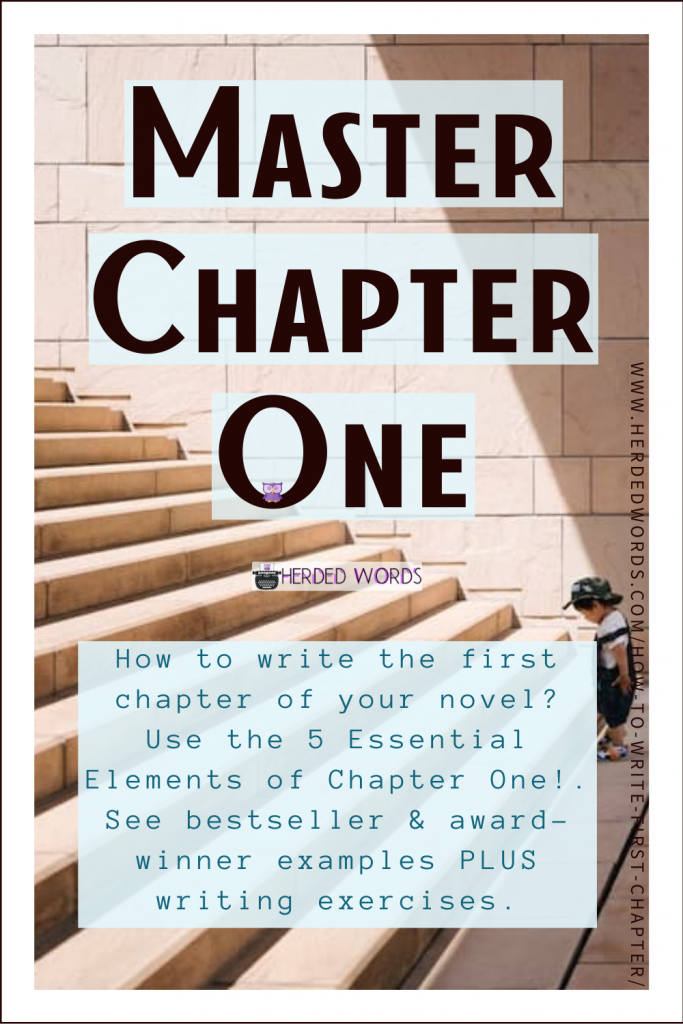
Typically, best-selling novels tend to follow the 5 rules closely. Award-winning novels will have more discrepancies.
No matter what type of novel you want to write, the five essential elements of an epic first chapter are never going to hurt.
Not sure what tools will help you write? Check out the Guide to Tools for Writers next.
Like this post? Please PIN IT and follow me on social media. Thanks!
